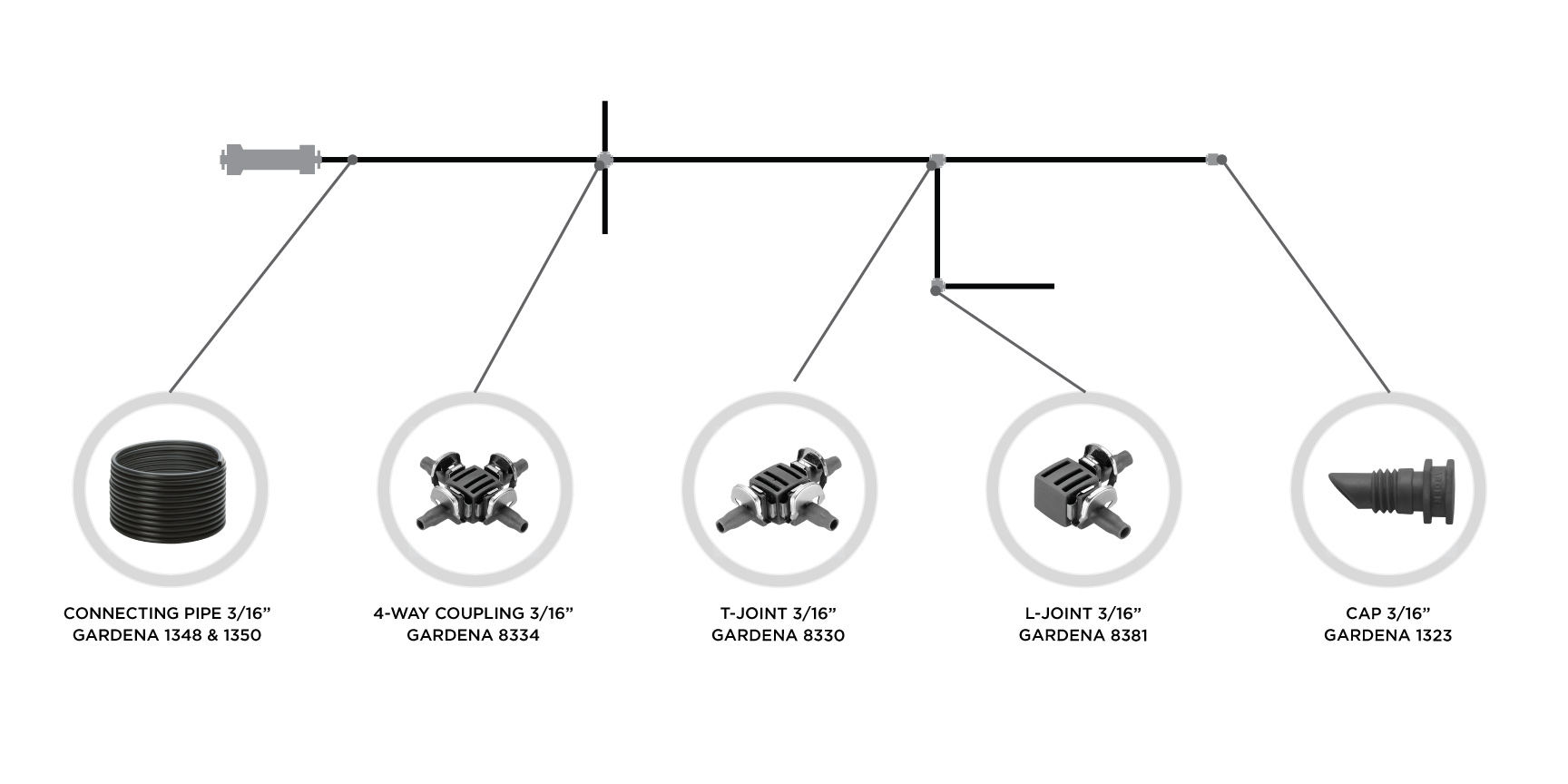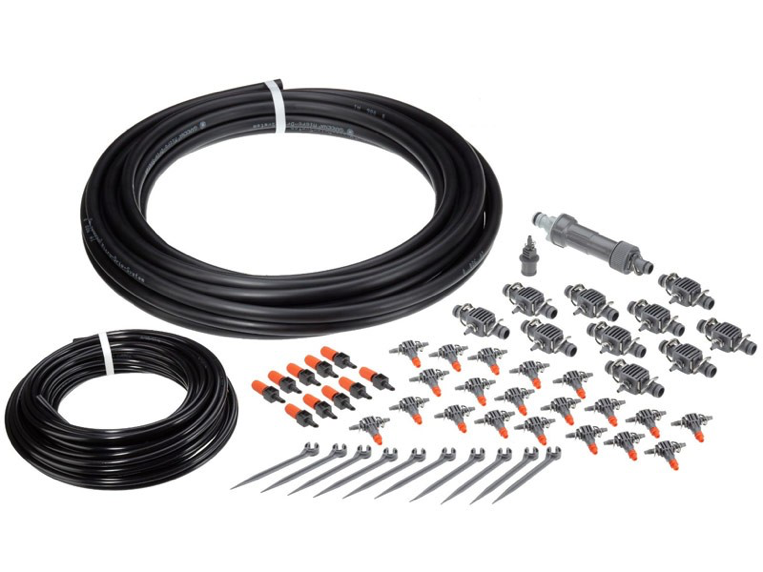Explaining Gardena Drip Irrigation System parts and pieces
In the previous article “What’s Drip Irrigation?”, we have demystified the how-tos of drip irrigation also commonly known as micro-irrigation. Being a particularly-effective and sustainable solution to water waste, drip irrigation is the most important innovation in the watering industry. While the timer automatically distribute the amount of water wanted, the water brought directly to the roots prevents evaporation and loss.
Convinced by their many advantages, we go shopping for a micro-irrigation system. After all, spring is the ideal time to set this up, vegetable garden, an ornamental garden, a simple flowerbeds or even a greenhouse. However, before the various parts available to us, confusion sets in. Let’s make sure you understand and fill your watering needs.
In order to benefit from a drip irrigation system, let’s start by differentiating the large families of parts. Then, the choice of these will seem much more natural.
The Large Families of Parts
Generally speaking, a micro-irrigation system includes a master unit, pipes (large and small), connectors, drippers/sprinklers and plugs (to close your lines!).
The Master Unit
The starting component of every micro-irrigation system is the Master Unit. It is needed to reduce water pressure to 1.5 bar. It is the centrepiece of regulation that must be installed directly on its regular hose or water outlet. Two in one, it filters water and can connect to both pipe sizes (large and small). There are two types of master units: the Master Unit 1000, which comes in particular in the starting sets, which can deliver approximately 1000 litres per hour and the Master Unit 2000 for larger installations which delivers about 2000 litres per hour.

Pipes
There are two types of piping. On the one hand, there is the large one that has a circumference of 1/2 inch which is called connecting pipe. On the other, commonly referred to as the supply pipe, there is the small one that has a circumference of 3/16 inch. Each pipe is 50 feet long. Hence, it is not length that differentiates them, but their circumference. For ease of understanding, one can compare the 1/2-inch pipe to the trunk of a tree and the 3/16-inch pipe to its branches.

1/2” Pipe, aka Big Pipe
- Allows water to be supplied to the entire network over long distances;
- Allows to water rows of plants over a long distance;
- Drippers and sprinklers can be installed directly, especially to water a row of large shrubs.
3/16” Pipe, aka Small Pipe
- Allows to supply water to a plant individually (end of line);
- Allows to water a row of plants over a small distance (2 to 8 plants);
- Drippers and sprinklers can be installed directly on the pipe.
Connectors
There are several types of connectors available in 2 sizes (1/2″ and 3/16″). The connectors are used to connect the pipes to each other (T-), to divide them in 4 (derivation in cross “X”) or derive them to 90 degrees (junction in “L”). Please note that the only connector capable of switching from a large 1/2″ pipe to a small 3/16″ pipe is the T-lead 8333.
As illustrated, to close your lines, each pipe (big or small) has its plug!


Drip Heads
The main function of inline drip heads is to carry the water as close as possible to the roots of each plant, and this without losing water by evaporation. They were developed to let the right amount of water flow, one drop at a time. There are multitudes of inline drip heads, and they are all adapted to specific needs which are either adjustable individually or not. However, two types of drippers can be distinguished by the manner in which they are disposed on the pipe: inline drip heads and endline drip heads.
Inline Drip Heads
- Used to water a row of plants over a small distance;
- Allows watering rows of plantations having similar water requirements, such as flower pots;
- Inline drip heads are connected on your smallest 3/16” pipe.

Endline Drip Heads
- Used for drip irrigation of individual / isolated plants or longer plant rows having similar water requirements, such as hedges;
- Perfect for pots or planters.

Spray Nozzles
If there are different varieties of drippers, there are as many, if not more, when it comes to micro-sprinklers. Spray nozzles diffuse a fine drizzle in a stable or rotating way at 365, 180 or 90 degrees. Some are designed to water a small area, and others can water up to a length of 42 feet (oscillating sprinkler). However, the majority of them are used to water small areas of flowers, shrubs or vegetable garden. They are also ideal for flowerbeds. Like drippers, there are inline and endline micro-sprinklers for small surfaces.

Starter Sets
Some parts have been assembled in starter sets to meet common needs such as the Micro-Drip starter kit for terraces, greenhouses or planters. Each set also contains installation tools with pipe pegs, pipe clips, and an installation tool to precisely puncture and install drippers like sprinklers without too much effort.
However, do not limit yourself to the starter kit to achieve your ideal scenario. Other parts have been designed to meet specific needs. For example, add a watering timer system to benefit from automatic drip irrigation programming and a fertilizer dispenser to kill two birds with one stone.
First things first, let’s realize an installation plan. All the stages will be presented in the next article to realize your own micro-irrigation network.

